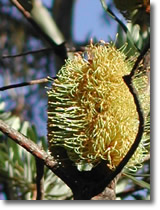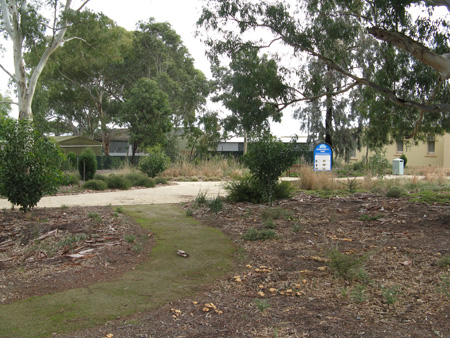Biodiversity in Campbelltown
What is Biodiversity?
Biodiversity is the variety of all living things - the different plants, animals and micro-organisms, the genes they contain and the ecosystem of which they form a part.
An ecosystem refers to the complex networks formed by the interaction of animals and plants with each other and with their environment. Biodiversity is the web of life.
Biodiversity is considered at three distinct levels:
- genetic diversity - natural variation within species
- species diversity - the variety of organisms on earth
- ecosystem diversity - the variety of habitats, communities and ecological communities
Biodiversity is essential to our health and survival and provides benefits such as:
- ecosystem services which provide clean air to breathe and clean water to drink
- food and medicines
- social benefits for recreation and enjoyment of natural beauty
- promoting physical and mental health through movement, enhancing our microbiome and calming our minds

Biodiversity in the Campbelltown Council Area
Our environments are very different from those once occupied by the Aboriginal people of the Kaurna nation. Much of the indigenous biodiversity first encountered by European settlers in the late 1830s has been lost through agricultural pursuits and later residential developments.
Within the Campbelltown Council area the remaining biodiversity is restricted to small fragments in Council reserves and roadsides. However, rich and diverse flora can still be found along the western foothills of the Mount Lofty Ranges. This is particularly true of the native vegetation found at the base of Black Hill, near Athelstone, and contained in Wadmore Park / Pulyonna Wirra.
Remnant vegetation also persists along the margins of Fifth Creek and the riparian reserves of Fourth Creek Morialta Parri.
Less original biodiversity exists along Third Creek although some significant tree species remain and the Gums Landcare group is working hard to improve it.
View the Native Flora and Fauna Brochure for map guides of Campbelltown's native flora and fauna. Created by Campbelltown Landcare with the support of Campbelltown City Council.
Biodiversity in Council Reserves
Protecting and expanding areas of indigenous vegetation in Council reserves is an important part of conserving our biodiversity. To prioritise this work, Council has surveyed and identified a number of reserves that are significant for biodiversity conservation. Council's maintenance of these biodiversity reserves includes revegetation with local indigenous plant species and partnerships with community based groups, and other government and non-government groups for the management of indigenous vegetation.
View Council's complete Bio Survey and Bio Report Card.
Wadmore Park / Pulyonna Wirra
Wadmore Park / Pulyonna Wirra, situated in the suburb of Athelstone and covering approximately 30 hectares, is an important community asset. The Park will be retained and protected for the enjoyment of the community and visitors today and in the future. The Park is surrounded on its western, northern and eastern boundaries by residential land uses. On the southern boundary is Foxfield Oval Reserve, the Black Hill Conservation Park and the NRM SA Black Hill regional office.
The Wadmore Park/Pulyonna Wirra Management Plan 2021-2026 was recently developed to protect the indigenous vegetation and biodiversity value of the park.
There are two overarching goals of this plan.
The aspirational goal is to conserve, improve and advocate on the biodiversity and nature values of the Park for future generations while also protecting residents from bushfires.
There is also a management goal to undertake strategic and targeted management, learn by doing, and balance out different Park uses and expectations. Essentially this goal provides the “how” to the aspirational goal.
The Council works in partnership with the Campbelltown Landcare group to protect the indigenous vegetation of the park.
Council's Wirra Marri - Rotary Bush Garden
Council, with funding support from the Urban Forest Million Trees Program and the support of the Campbelltown Rotary Club, developed a biodiversity garden on the corner of Montacute and Newton Roads, Campbelltown. The biodiversity garden was developed by converting a general Council reserve into an indigenous garden to showcase local indigenous plant species.

The use of indigenous plant species in a landscape setting demonstrates to the community and visitors the potential for using local indigenous species in home gardens. This project supports Council's current efforts to promote indigenous plant species through the Backyard Biodiversity Booklet and the Garden Weeds and Bushland Invaders Booklet.
The garden is also providing a seed source of local indigenous plant species which can be collected and propagated for use in other Council reserves.
